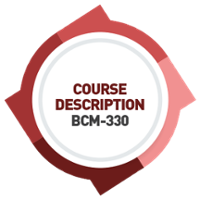Summary and Conclusion
![Children Home [BC] [PM] BIA 01](https://blog.bcm-institute.org/hs-fs/hubfs/BB%20BC%20Children%20Home/Children%20Home%20%5BBC%5D%20%5BPM%5D%20BIA%2001.jpg?width=289&height=289&name=Children%20Home%20%5BBC%5D%20%5BPM%5D%20BIA%2001.jpg) In "Implementing and Managing Business Continuity Management (BCM) for Children's Homes," we have explored the essential elements needed to build a resilient and effective BCM program tailored specifically for children's homes.
In "Implementing and Managing Business Continuity Management (BCM) for Children's Homes," we have explored the essential elements needed to build a resilient and effective BCM program tailored specifically for children's homes.
The unique nature of these facilities, where the safety and well-being of vulnerable children are paramount, demands a robust approach to preparedness, response, and recovery.
This final chapter encapsulates the key lessons and strategies discussed throughout the book, reinforcing the critical importance of BCM in maintaining continuous care and protection for children.
The book began by emphasizing the foundational understanding of critical business functions within a children's home. These functions, ranging from caregiving and health services to communication and resource management, form the backbone of daily operations and must be preserved even during a crisis.
Identifying and assessing the various threats - natural disasters, pandemics, cyber incidents, and internal operational failures - allowed us to develop targeted risk mitigation and response strategies. We explored the core of the BCM process by creating a detailed BC Plan, which outlines specific actions to be taken before, during, and after an incident to ensure the continuity of essential services.
Understanding Business Continuity Management for Children's Home
Business continuity management (BCM) in Children's Homes is crucial to safeguarding residents' health, safety, and well-being while maintaining operational integrity.
The primary goal is to prepare for potential threats, respond effectively, and recover swiftly to minimize disruptions. Given their vulnerable populations and critical services, children's homes must prioritize BCM as a core operational focus.
Potential Threats
In the risk analysis and review phase of the BCM planning methodology, identifying the threats to a children's home is crucial for preparing effective response strategies. These threats can include natural disasters such as floods, earthquakes, and storms, disrupting daily operations and damaging facilities.
Additionally, pandemics and infectious disease outbreaks pose significant risks to the health and well-being of both children and staff. Cybersecurity threats, including data breaches and hacking, can compromise sensitive information and disrupt communication systems. Internal threats, such as staff shortages or operational failures, can also impact the home’s ability to provide continuous care.
By thoroughly assessing these threats, a children's home can develop targeted risk mitigation strategies to protect its residents and ensure the continuity of essential services.
Critical Business Functions
Identifying the critical business functions of a children's home is essential in the business impact analysis phase of the business continuity management (BCM) planning methodology to ensure that the facility can continue to provide vital services during and after a disruption.
These critical business functions typically include caregiving, healthcare, communication, and resource management. Caregiving encompasses daily activities such as feeding, bathing, and emotional support, which are crucial for the children's well-being. Healthcare services, including medical care and mental health support, are also vital, as they address the children's physical and emotional needs.
Effective communication between external stakeholders is necessary to coordinate responses, provide updates, and manage crises. Lastly, resource management ensures that essential supplies, such as food, medicine, and utilities, are available and accessible at all times.
Business Continuity Strategies
The strategies detailed in this book focus on maintaining operational stability and ensuring resident safety. Key strategies include:
- Infection Control Measures. Rigorous protocols to prevent and manage outbreaks.
- Facility Safety. Regular maintenance and installation of safety systems.
- Cybersecurity. Protecting sensitive health information from breaches.
- Resource Management. Maintaining critical supplies and backup utilities.
- Staff Training and Management. Preparing staff for emergencies and ensuring adequate coverage.
- Financial Continuity. Comprehensive insurance, financial reserves, and diversified funding.
- Partnerships and Coordination. Collaborating with local emergency services, community resources, and regulatory agencies.
Developing a Comprehensive Business Continuity Plan
In the plan development phase of the Business Continuity Management (BCM) planning methodology for a children's home, creating a BC Plan involves outlining clear strategies and procedures to ensure the continuation of critical services during a disruption.
The plan includes an introduction that sets the context and objectives, defines the plan's scope, and details the roles and responsibilities of staff members. It also covers emergency procedures for various scenarios; communication plans to maintain contact with stakeholders, and resource management strategies to ensure access to essential supplies.
To remain effective, the plan must be well-documented, accessible, and regularly updated. It must ensure that the children's home can quickly and efficiently respond to any crisis while safeguarding the well-being of its residents.
Testing and Exercising Your Plan
Program Management
However, creating a BC Plan is only the first step. A BCM program's effectiveness lies in its continuous management, regular testing, and adaptability. We discussed the importance of ongoing training, drills, and exercises to keep staff prepared and the plan relevant.
Additionally, the role of program management in maintaining and refining the BCM program was highlighted, ensuring that the plan evolves in response to new challenges and changing circumstances.
Ultimately, this book underscores the vital role of BCM in safeguarding the children's home environment, ensuring that it remains a safe, stable, and nurturing place for the children who rely on it, no matter what challenges arise.
Conclusion
Implementing and managing Business Continuity Management in children's homes is about preparing for worst-case scenarios and creating a culture of resilience and adaptability. The strategies and plans discussed in this book aim to provide a roadmap for children to navigate through disruptions with minimal impact on their residents' health and well-being.
By prioritizing BCM, children's homes can ensure that they are prepared to face emergencies and positioned to recover quickly and continue providing essential care. The proactive approach to identifying risks, planning responses, and training staff will help create a safer and more stable environment for residents and employees.
In conclusion, the journey towards robust Business Continuity Management is ongoing. It requires constant vigilance, regular updates, and a commitment to continuous improvement. Nursing homes can weather any storm with the right strategies, providing peace of mind to residents, families, and staff alike.
Summing Up ...
Thank you for embarking on this journey with us. May this eBook serve as a valuable resource in your efforts to implement and manage Business Continuity Management in your children's home.
This blog will provide the "Planning Steps for Implementing BCM for Children's Home." Click the icon above to read more. It will give you a good overview of the steps to be taken.
Lastly, what competency should you have with funding from the Singapore government?
How To Be Competent and Where Do I Start?
As this article is set in the context of the Children's Home and is also aligned to the Singapore context, there is a provision for training aligned with the planning methodology and approved as one of the key Singapore Workforce Skills Qualifications (WSQ) and SkillsFuture Singapore (SSG) funding. If you are facing these two challenges, these are the possible solutions.
Challenge One: Competency of Appointed BCM Executive Spearheading the Implementation
 Organisation BCM Coordinators." With support from the Singapore government, it is highly recommended that this appointed executive and his or her alternate be trained to the highest level of BCM competency.
Organisation BCM Coordinators." With support from the Singapore government, it is highly recommended that this appointed executive and his or her alternate be trained to the highest level of BCM competency.
 The ISO22301 BCMS Expert Implementer or BCM-5000 is the recommended option.
The ISO22301 BCMS Expert Implementer or BCM-5000 is the recommended option.
The institute would like to share that achieving the expert-level certification should not be a priority, as you will be certified as a "Business Continuity Certified Planner" upon course completion. The other good news is that SkillsFutue Singapore (SSG) funds it from 50% to 70%.
Challenge Two: Competency of Team Implementing or Updating the BC Plan
 Often, the Children's Home management will appoint an executive to handle this task alone. The reason is that the rest of the team (the Business Unit BCM Coordinator) is busy. This has resulted in the task being completed, but the BC Plan does not work.
Often, the Children's Home management will appoint an executive to handle this task alone. The reason is that the rest of the team (the Business Unit BCM Coordinator) is busy. This has resulted in the task being completed, but the BC Plan does not work.
![[ITL] [1-6] Training-led BCM Implementation: Overview](https://no-cache.hubspot.com/cta/default/3893111/f8e68a33-08ac-4d56-98f2-a8cb0c6fbe5c.png) The key is to allow the respective representatives from the various sections or departments to come together and develop this BC effort in stages. BCM Institute will recommend competency-based training, also funded by SSG.
The key is to allow the respective representatives from the various sections or departments to come together and develop this BC effort in stages. BCM Institute will recommend competency-based training, also funded by SSG.
As specified above, the BCM planning methodology completes the implementation in phases. The key is for the respective stakeholders to develop the content and attend the six-spaced-out 4-hour training sessions to complete this assignment.

 Special Announcement for Singapore-based Organisations
Special Announcement for Singapore-based Organisations
Suppose you intend to implement or update your business continuity planning program in your nursing, children's, or old folk homes. In that case, you may consider this "improvised" approach, designed by BCM Institute with funding from SkillsFuture Singapore.
Estimate for Fee Payment
![[WSQ] Singapore Workforce Skills Qualification BCM Course Catalog](https://no-cache.hubspot.com/cta/default/3893111/417125a5-956d-439c-8b2a-da85fd2f696a.png) |
![[BL-3-Catalog] What Specialist Level Blended Learning Courses that are Available?](https://no-cache.hubspot.com/cta/default/3893111/4b22a53c-6e3e-4b9e-8c2a-888423f1d26c.png) |
![[BL-5-Catalog] What Expert Level Blended Learning Courses that are Available?](https://no-cache.hubspot.com/cta/default/3893111/fe175db3-7f57-4636-bf09-e9a836aa5478.png) |















![Email to Sales Team [BCM Institute]](https://no-cache.hubspot.com/cta/default/3893111/3c53daeb-2836-4843-b0e0-645baee2ab9e.png)


